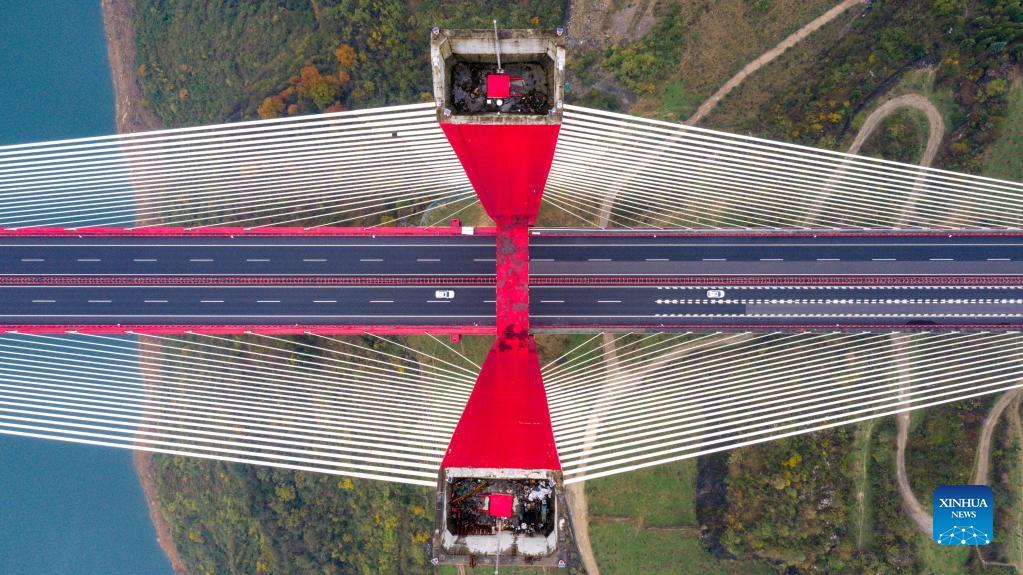
Aerial photo taken on Nov. 26, 2021 shows the Yachihe Bridge of Guiyang-Qianxi Expressway in southwest China's Guizhou Province. Guizhou, with 92.5 percent of its area covered by mountains and hills, has built over 20,000 bridges since late 1970s. It has 50 of the 100 tallest bridges in the world. Due to the large number of bridges, their types and complex technologies used in the construction of the bridges, the province is known as "the museum of world bridges," according to the provincial department of transport. Thanks to the construction of these bridges, Guizhou is becoming deeply integrated with the nation's transportation network, ushering in improved quality of life for local residents. (Xinhua/Ou Dongqu)
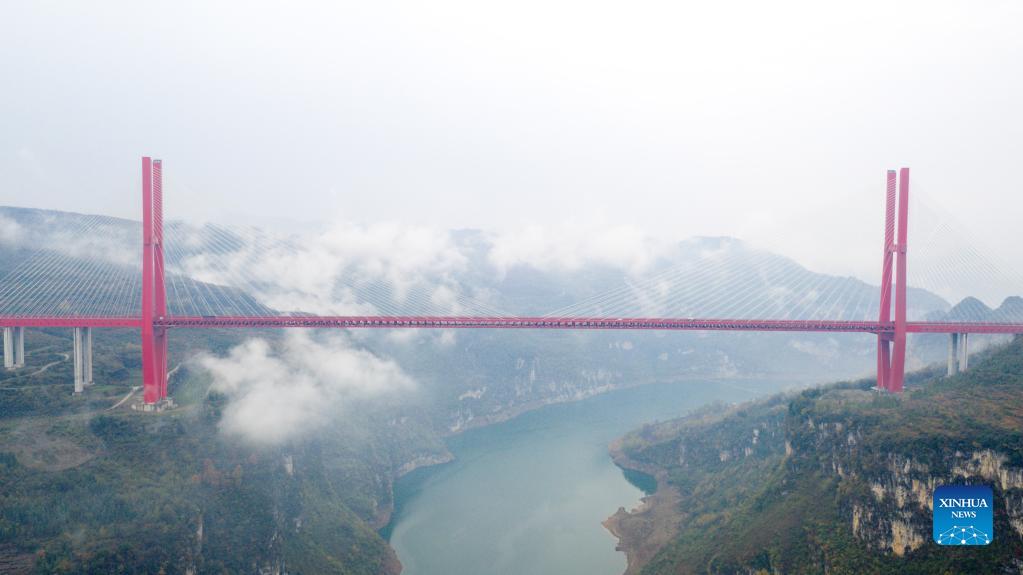
Aerial photo taken on Nov. 26, 2021 shows the Yachihe Bridge of Guiyang-Qianxi Expressway in southwest China's Guizhou Province. Guizhou, with 92.5 percent of its area covered by mountains and hills, has built over 20,000 bridges since late 1970s. It has 50 of the 100 tallest bridges in the world. Due to the large number of bridges, their types and complex technologies used in the construction of the bridges, the province is known as "the museum of world bridges," according to the provincial department of transport. Thanks to the construction of these bridges, Guizhou is becoming deeply integrated with the nation's transportation network, ushering in improved quality of life for local residents. (Xinhua/Ou Dongqu)
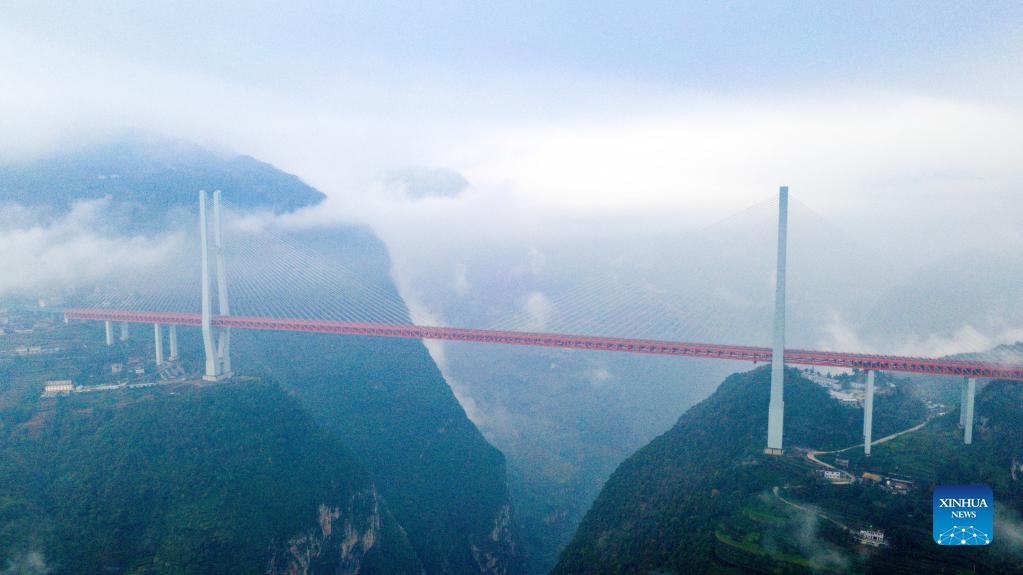
Aerial photo taken on Nov. 28, 2021 shows the Beipanjiang Bridge in southwest China's Guizhou Province. Sitting over 565 meters above a valley, it has been certified as the world's highest bridge by the Guinness World Records. Guizhou, with 92.5 percent of its area covered by mountains and hills, has built over 20,000 bridges since late 1970s. It has 50 of the 100 tallest bridges in the world. Due to the large number of bridges, their types and complex technologies used in the construction of the bridges, the province is known as "the museum of world bridges," according to the provincial department of transport. Thanks to the construction of these bridges, Guizhou is becoming deeply integrated with the nation's transportation network, ushering in improved quality of life for local residents. (Xinhua/Ou Dongqu)
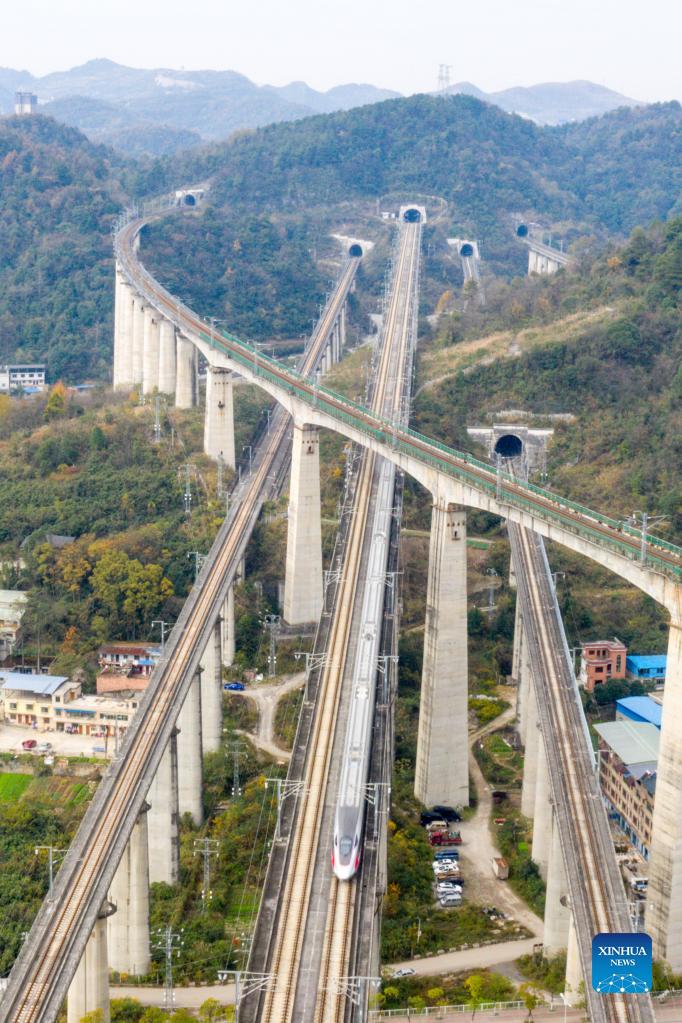
Aerial photo taken on Dec. 1, 2021 shows the junction of railway bridges in Guiyang City, southwest China's Guizhou Province. Guizhou, with 92.5 percent of its area covered by mountains and hills, has built over 20,000 bridges since late 1970s. It has 50 of the 100 tallest bridges in the world. Due to the large number of bridges, their types and complex technologies used in the construction of the bridges, the province is known as "the museum of world bridges," according to the provincial department of transport. Thanks to the construction of these bridges, Guizhou is becoming deeply integrated with the nation's transportation network, ushering in improved quality of life for local residents. (Xinhua/Ou Dongqu)
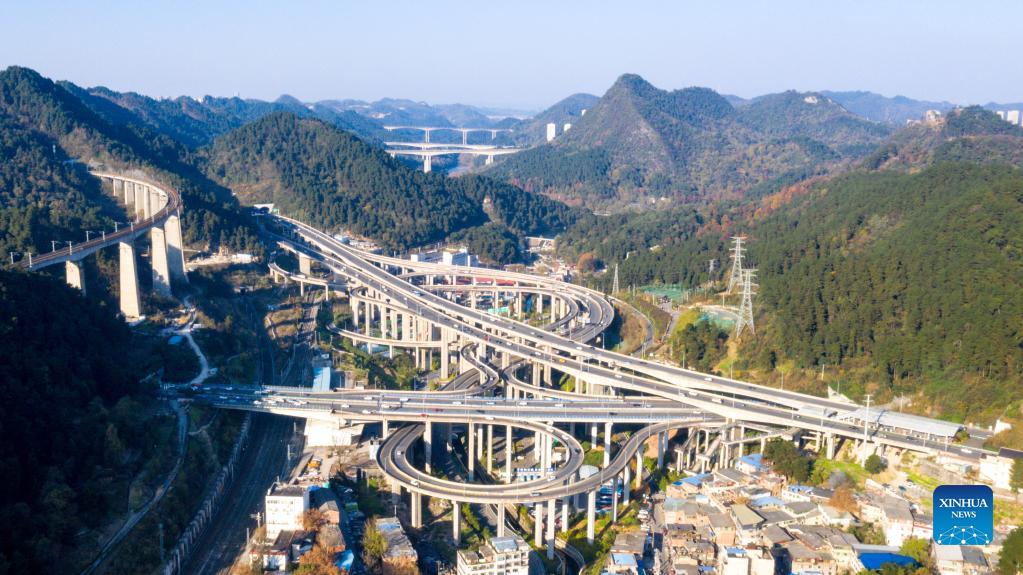
Aerial photo taken on Nov. 30, 2021 shows Qianchun Overpass in Guiyang, southwest China's Guizhou Province. Guizhou, with 92.5 percent of its area covered by mountains and hills, has built over 20,000 bridges since late 1970s. It has 50 of the 100 tallest bridges in the world. Due to the large number of bridges, their types and complex technologies used in the construction of the bridges, the province is known as "the museum of world bridges," according to the provincial department of transport. Thanks to the construction of these bridges, Guizhou is becoming deeply integrated with the nation's transportation network, ushering in improved quality of life for local residents. (Xinhua/Ou Dongqu)
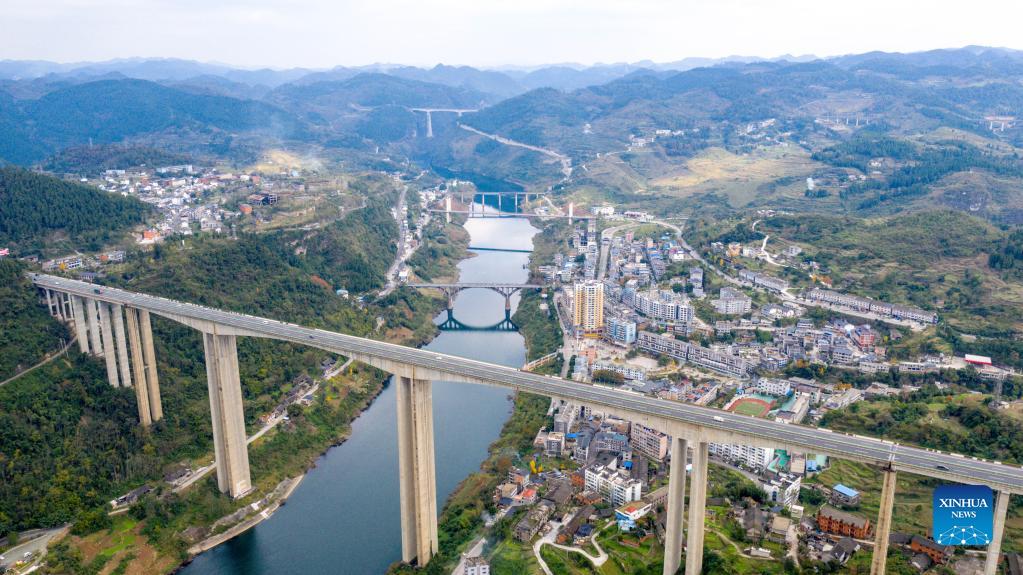
Aerial photo taken on Nov. 24, 2021 shows Wujiang River Bridge in Zunyi City, southwest China's Guizhou Province, Guizhou, with 92.5 percent of its area covered by mountains and hills, has built over 20,000 bridges since late 1970s. It has 50 of the 100 tallest bridges in the world. Due to the large number of bridges, their types and complex technologies used in the construction of the bridges, the province is known as "the museum of world bridges," according to the provincial department of transport. Thanks to the construction of these bridges, Guizhou is becoming deeply integrated with the nation's transportation network, ushering in improved quality of life for local residents. (Xinhua/Ou Dongqu)
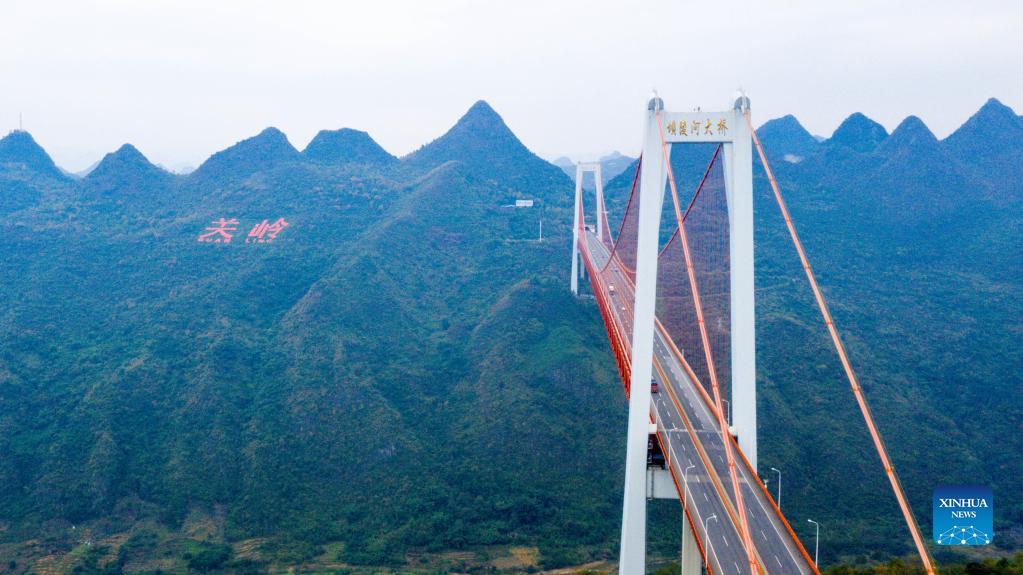
Aerial photo taken on Nov. 27, 2021 shows the Balinghe Bridge in southwest China's Guizhou Province. Guizhou, with 92.5 percent of its area covered by mountains and hills, has built over 20,000 bridges since late 1970s. It has 50 of the 100 tallest bridges in the world. Due to the large number of bridges, their types and complex technologies used in the construction of the bridges, the province is known as "the museum of world bridges," according to the provincial department of transport. Thanks to the construction of these bridges, Guizhou is becoming deeply integrated with the nation's transportation network, ushering in improved quality of life for local residents. (Xinhua/Ou Dongqu)
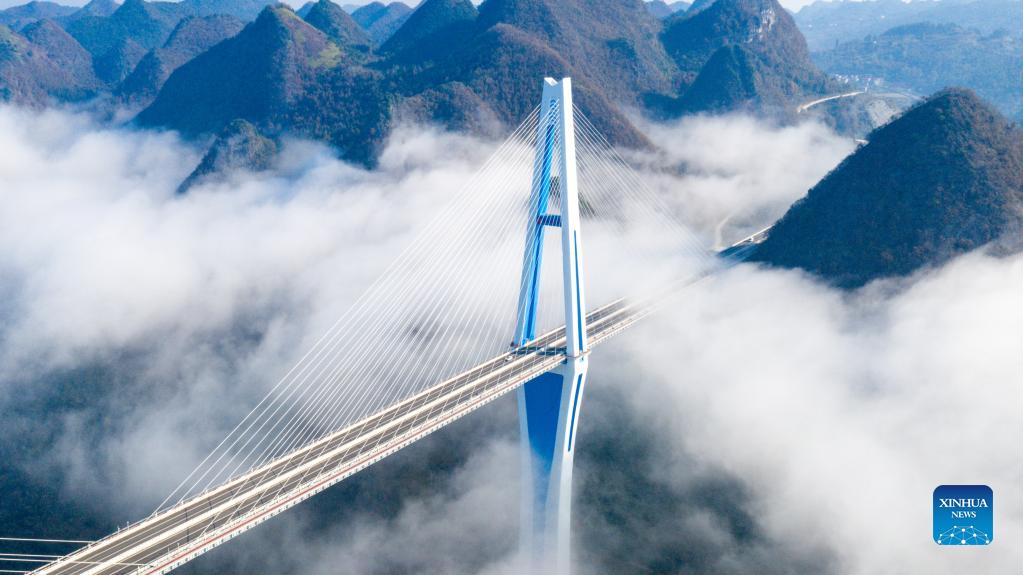
Aerial photo taken on Nov. 25, 2021 shows the Pingtang Bridge, a major connection on the Pingtang-Luodian Expressway, in southwest China's Guizhou Province. Guizhou, with 92.5 percent of its area covered by mountains and hills, has built over 20,000 bridges since late 1970s. It has 50 of the 100 tallest bridges in the world. Due to the large number of bridges, their types and complex technologies used in the construction of the bridges, the province is known as "the museum of world bridges," according to the provincial department of transport. Thanks to the construction of these bridges, Guizhou is becoming deeply integrated with the nation's transportation network, ushering in improved quality of life for local residents. (Xinhua/Ou Dongqu)
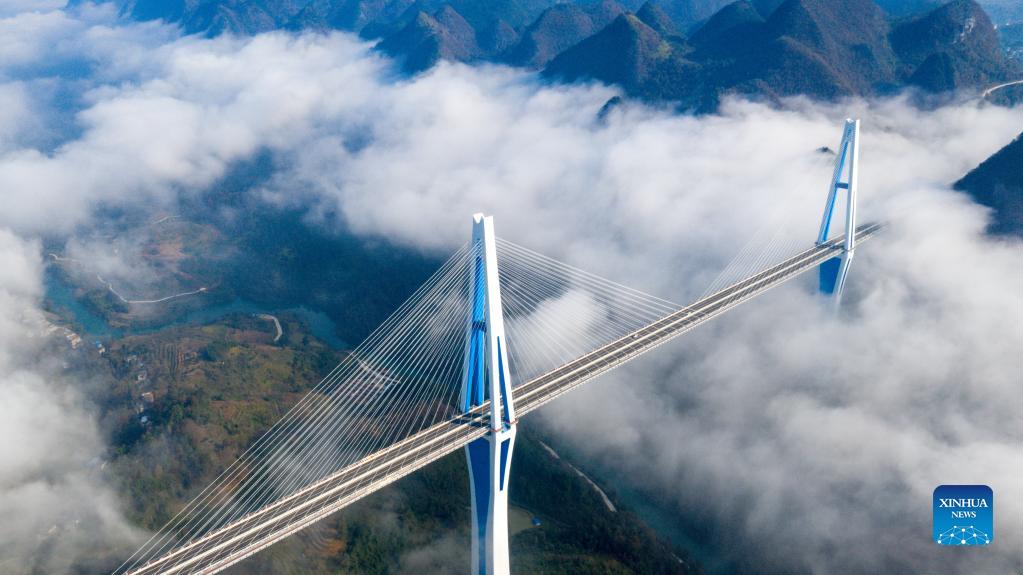
Aerial photo taken on Nov. 25, 2021 shows the Pingtang Bridge, a major connection on the Pingtang-Luodian Expressway, in southwest China's Guizhou Province. Guizhou, with 92.5 percent of its area covered by mountains and hills, has built over 20,000 bridges since late 1970s. It has 50 of the 100 tallest bridges in the world. Due to the large number of bridges, their types and complex technologies used in the construction of the bridges, the province is known as "the museum of world bridges," according to the provincial department of transport. Thanks to the construction of these bridges, Guizhou is becoming deeply integrated with the nation's transportation network, ushering in improved quality of life for local residents. (Xinhua/Ou Dongqu)
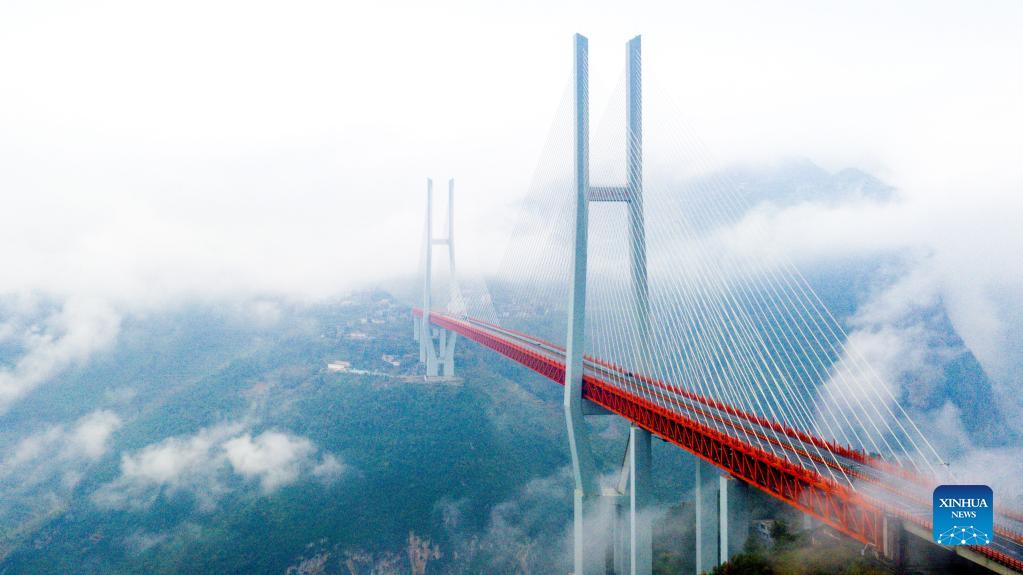
Aerial photo taken on Nov. 28, 2021 shows the Beipanjiang Bridge in southwest China's Guizhou Province. Sitting over 565 meters above a valley, it has been certified as the world's highest bridge by the Guinness World Records. Guizhou, with 92.5 percent of its area covered by mountains and hills, has built over 20,000 bridges since late 1970s. It has 50 of the 100 tallest bridges in the world. Due to the large number of bridges, their types and complex technologies used in the construction of the bridges, the province is known as "the museum of world bridges," according to the provincial department of transport. Thanks to the construction of these bridges, Guizhou is becoming deeply integrated with the nation's transportation network, ushering in improved quality of life for local residents. (Xinhua/Ou Dongqu)
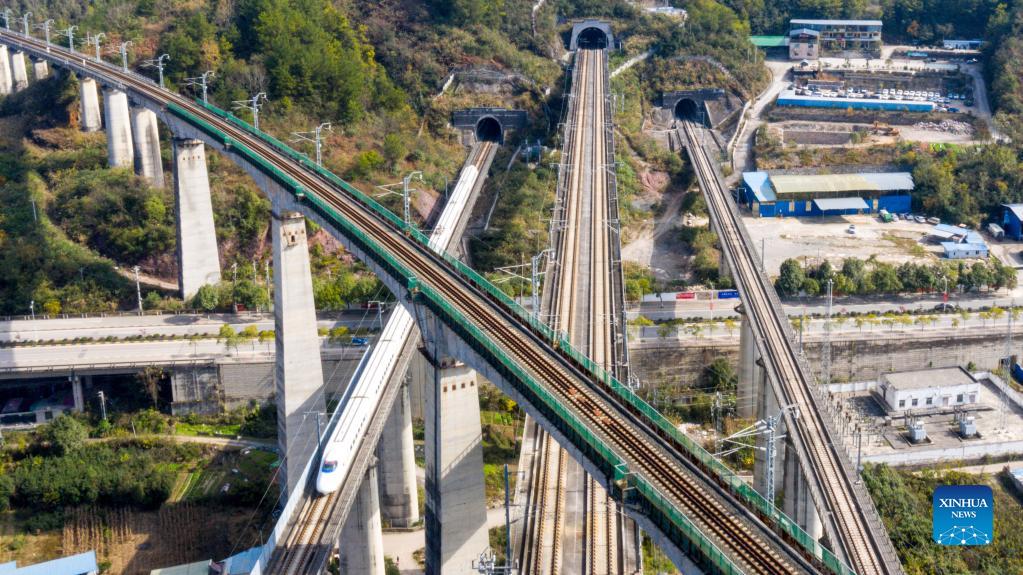
Aerial photo taken on Dec. 1, 2021 shows the junction of railway bridges in Guiyang City, southwest China's Guizhou Province. Guizhou, with 92.5 percent of its area covered by mountains and hills, has built over 20,000 bridges since late 1970s. It has 50 of the 100 tallest bridges in the world. Due to the large number of bridges, their types and complex technologies used in the construction of the bridges, the province is known as "the museum of world bridges," according to the provincial department of transport. Thanks to the construction of these bridges, Guizhou is becoming deeply integrated with the nation's transportation network, ushering in improved quality of life for local residents. (Xinhua/Ou Dongqu)
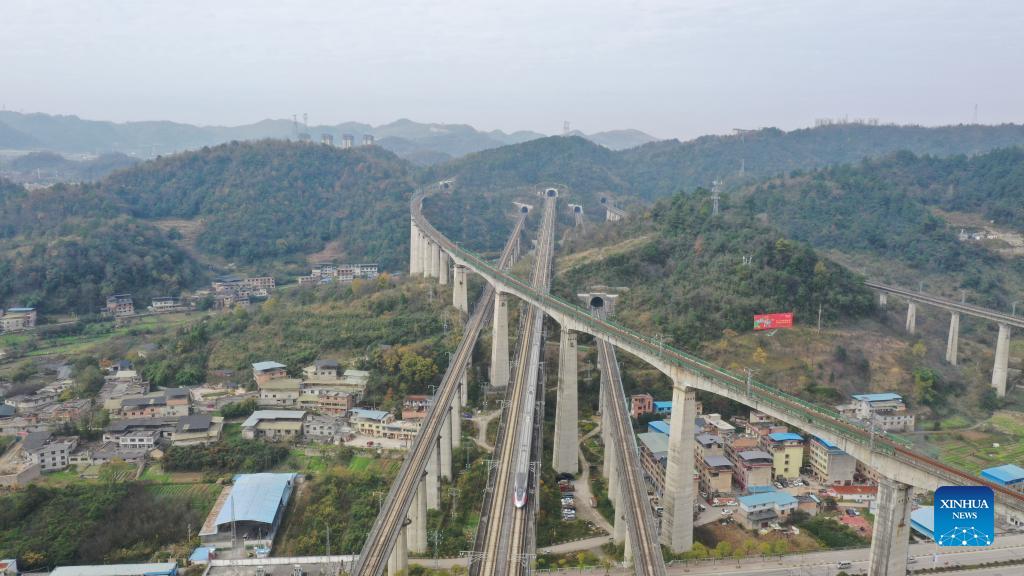
Aerial photo taken on Dec. 1, 2021 shows the junction of railway bridges in Guiyang City, southwest China's Guizhou Province. Guizhou, with 92.5 percent of its area covered by mountains and hills, has built over 20,000 bridges since late 1970s. It has 50 of the 100 tallest bridges in the world. Due to the large number of bridges, their types and complex technologies used in the construction of the bridges, the province is known as "the museum of world bridges," according to the provincial department of transport. Thanks to the construction of these bridges, Guizhou is becoming deeply integrated with the nation's transportation network, ushering in improved quality of life for local residents. (Xinhua/Ou Dongqu)
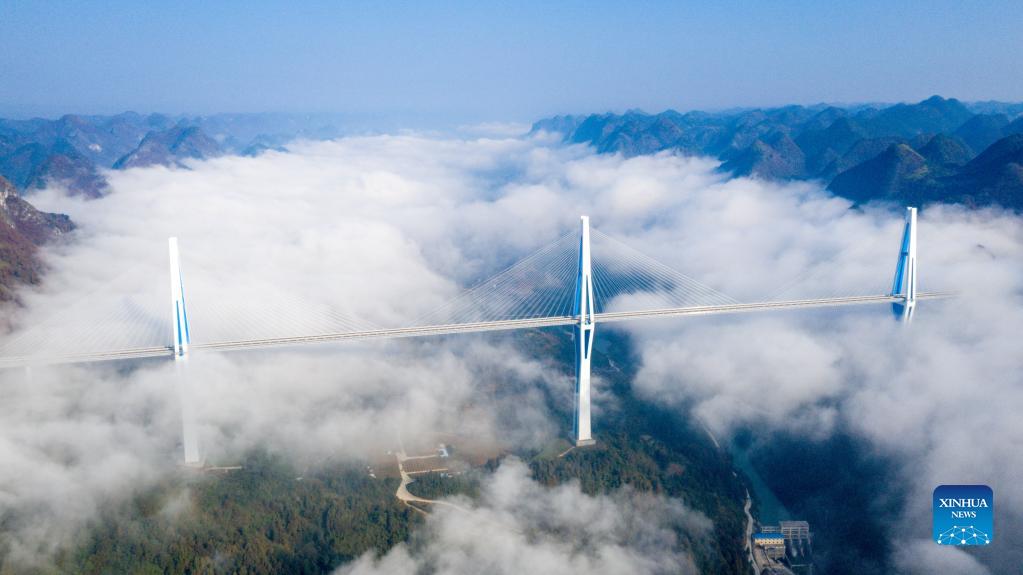
Aerial photo taken on Nov. 25, 2021 shows the Pingtang Bridge, a major connection on the Pingtang-Luodian Expressway, in southwest China's Guizhou Province. Guizhou, with 92.5 percent of its area covered by mountains and hills, has built over 20,000 bridges since late 1970s. It has 50 of the 100 tallest bridges in the world. Due to the large number of bridges, their types and complex technologies used in the construction of the bridges, the province is known as "the museum of world bridges," according to the provincial department of transport. Thanks to the construction of these bridges, Guizhou is becoming deeply integrated with the nation's transportation network, ushering in improved quality of life for local residents. (Xinhua/Ou Dongqu)
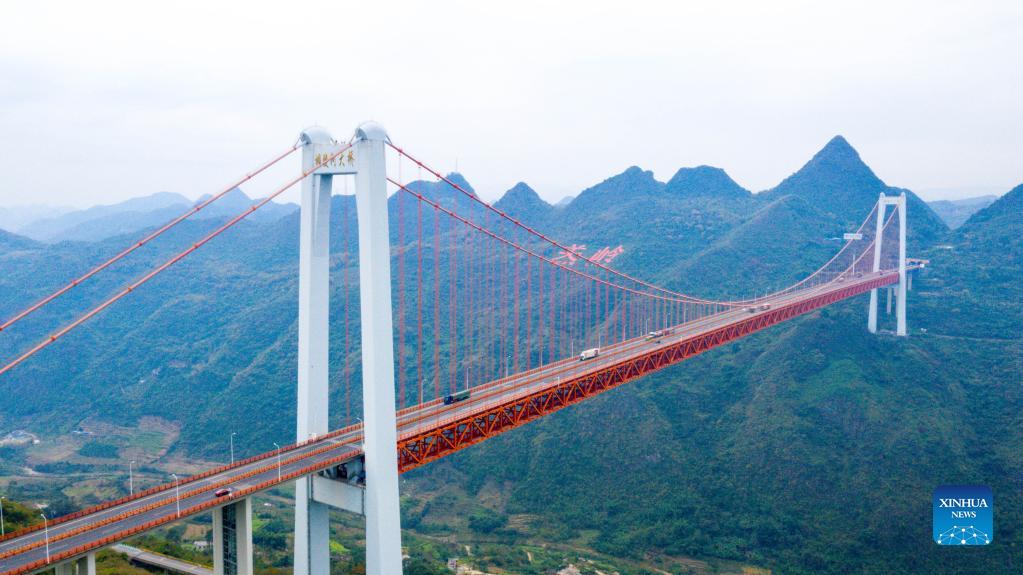
Aerial photo taken on Nov. 27, 2021 shows the Balinghe Bridge in southwest China's Guizhou Province. Guizhou, with 92.5 percent of its area covered by mountains and hills, has built over 20,000 bridges since late 1970s. It has 50 of the 100 tallest bridges in the world. Due to the large number of bridges, their types and complex technologies used in the construction of the bridges, the province is known as "the museum of world bridges," according to the provincial department of transport. Thanks to the construction of these bridges, Guizhou is becoming deeply integrated with the nation's transportation network, ushering in improved quality of life for local residents. (Xinhua/Ou Dongqu)
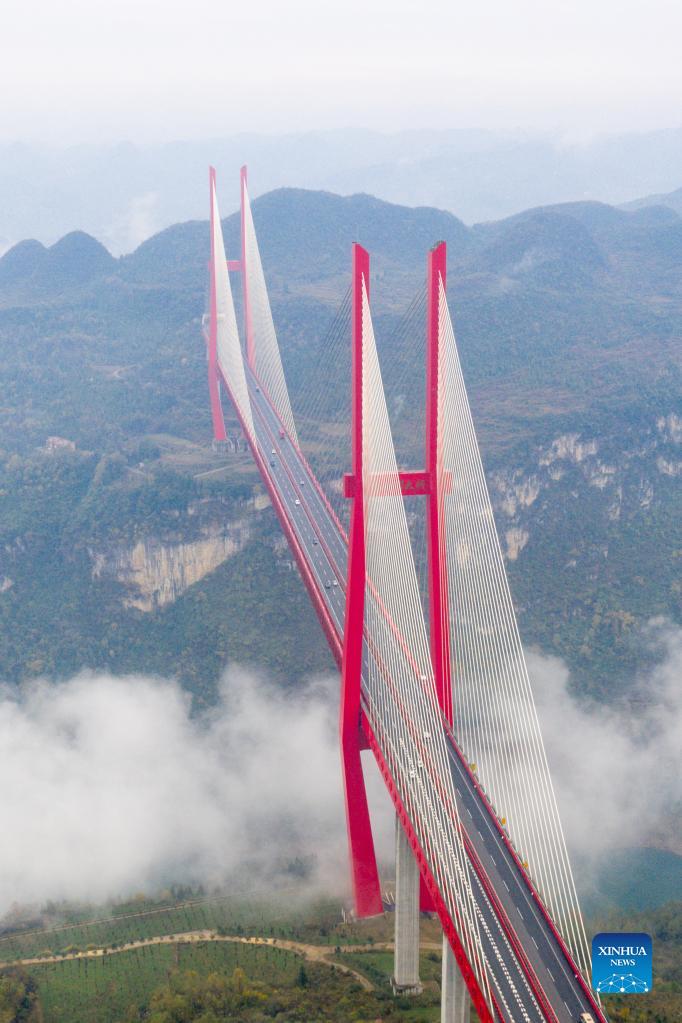
Aerial photo taken on Nov. 26, 2021 shows the Yachihe Bridge of Guiyang-Qianxi Expressway in southwest China's Guizhou Province. Guizhou, with 92.5 percent of its area covered by mountains and hills, has built over 20,000 bridges since late 1970s. It has 50 of the 100 tallest bridges in the world. Due to the large number of bridges, their types and complex technologies used in the construction of the bridges, the province is known as "the museum of world bridges," according to the provincial department of transport. Thanks to the construction of these bridges, Guizhou is becoming deeply integrated with the nation's transportation network, ushering in improved quality of life for local residents. (Xinhua/Ou Dongqu)




